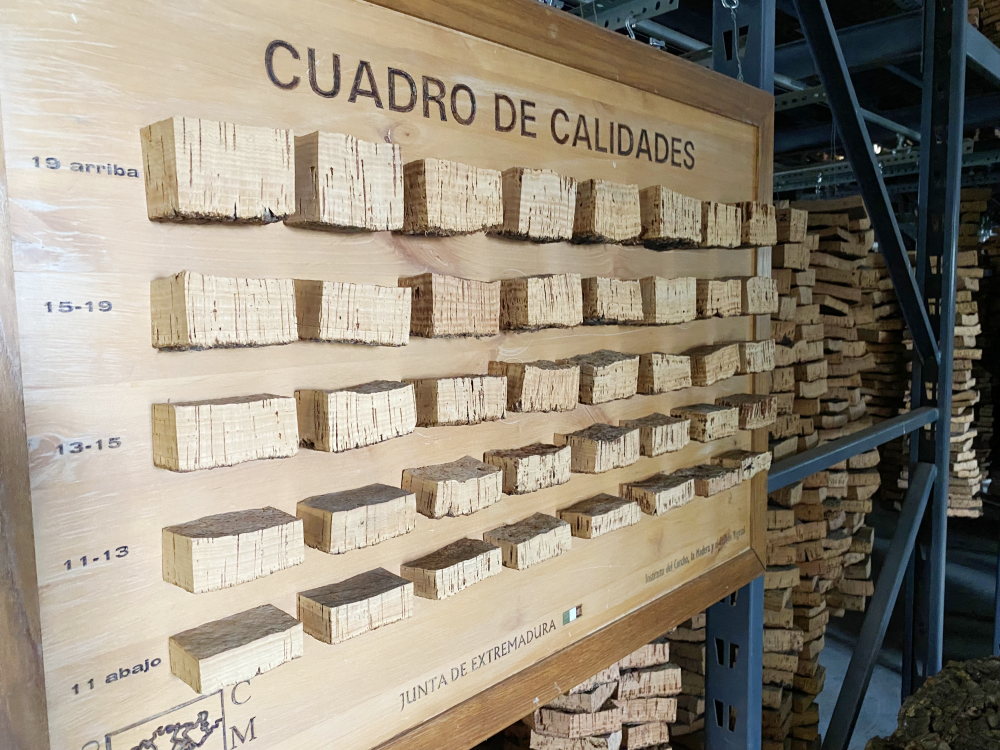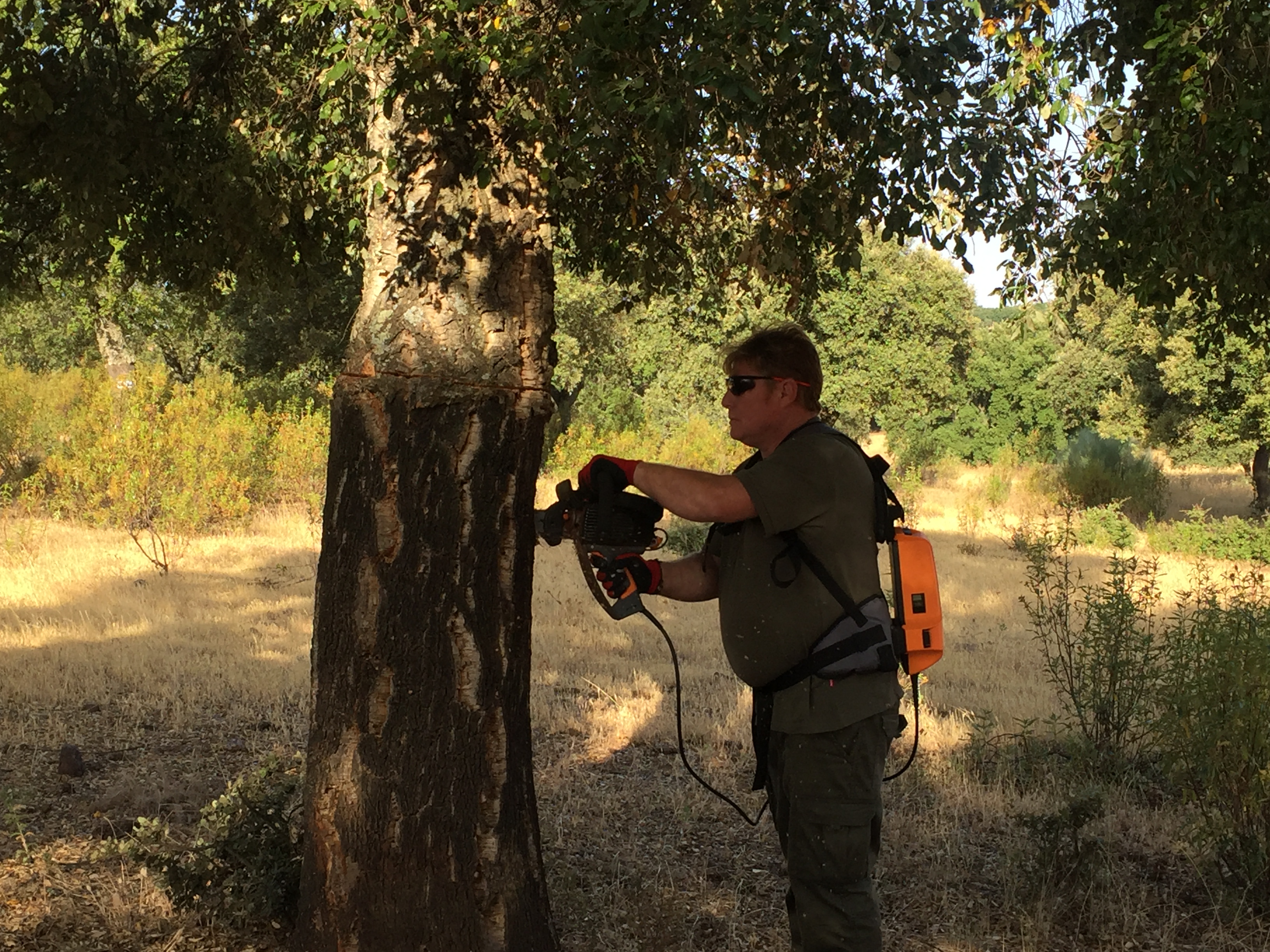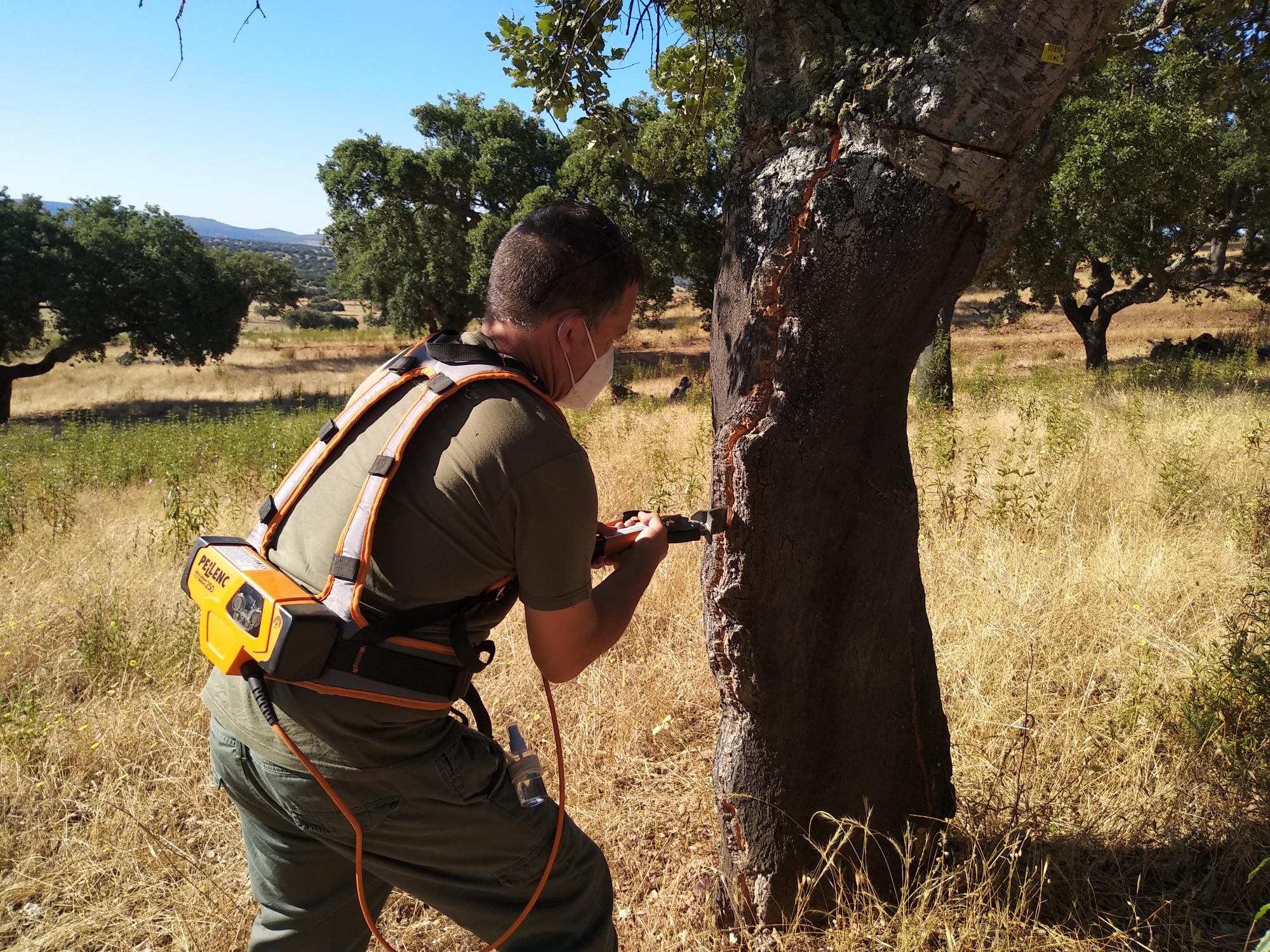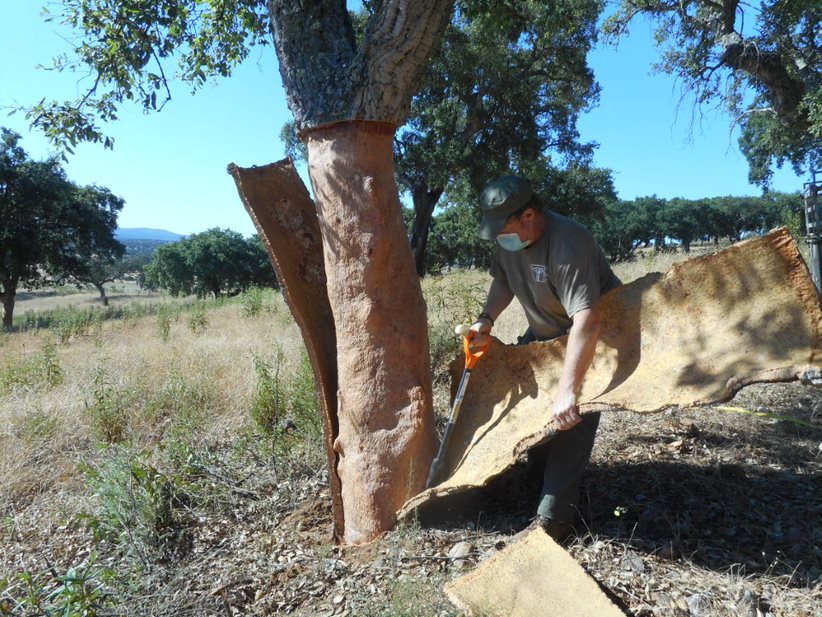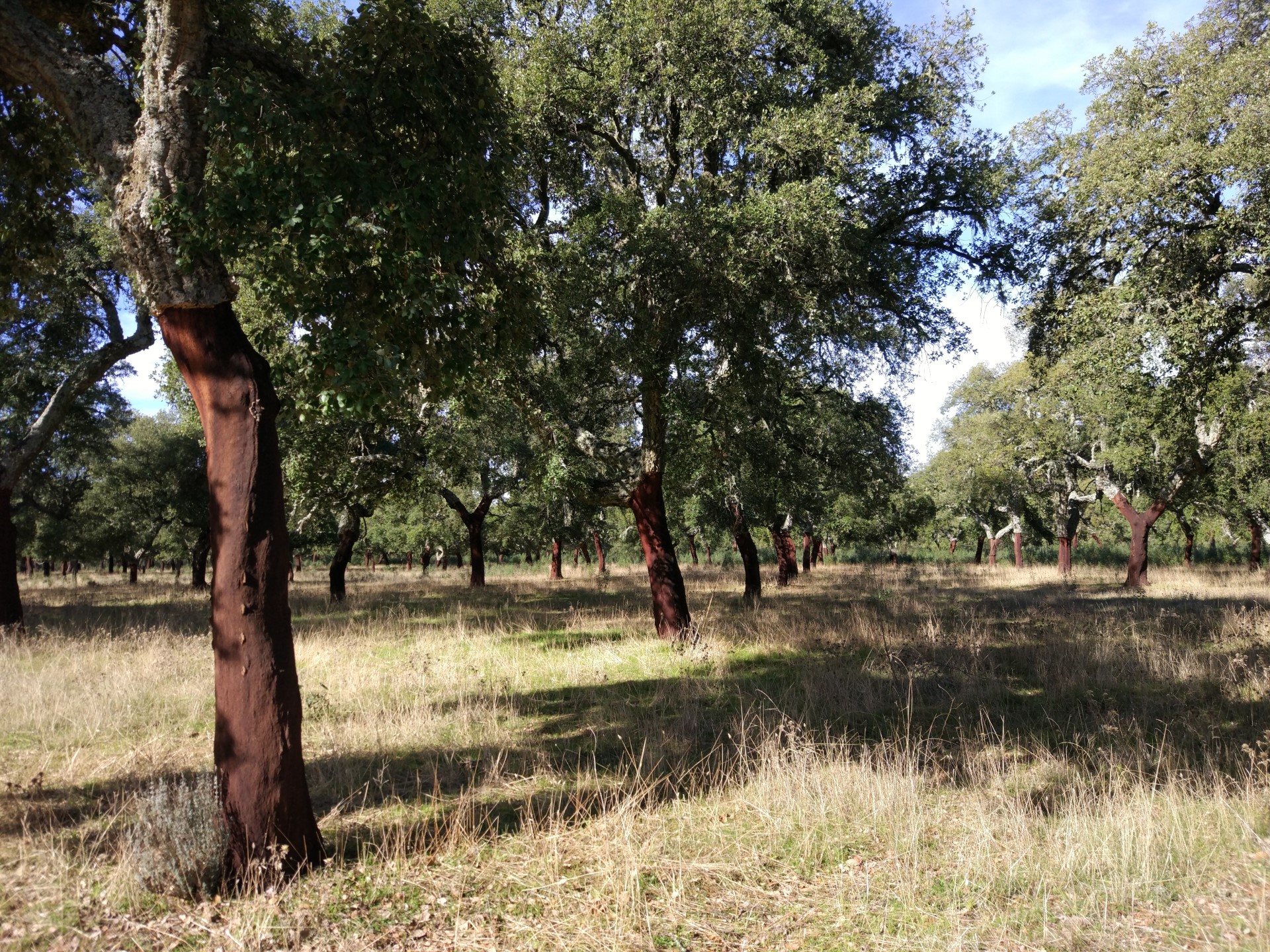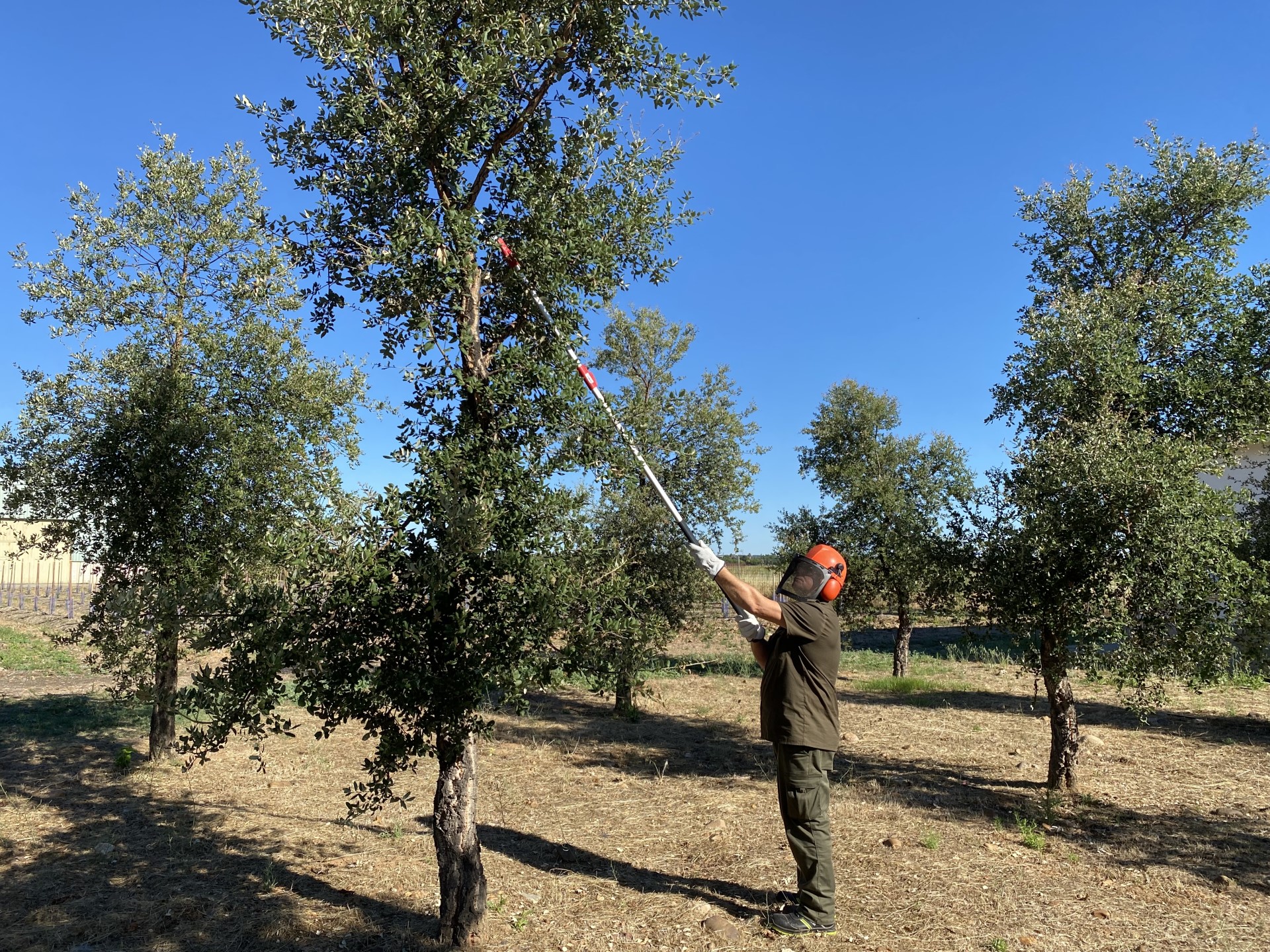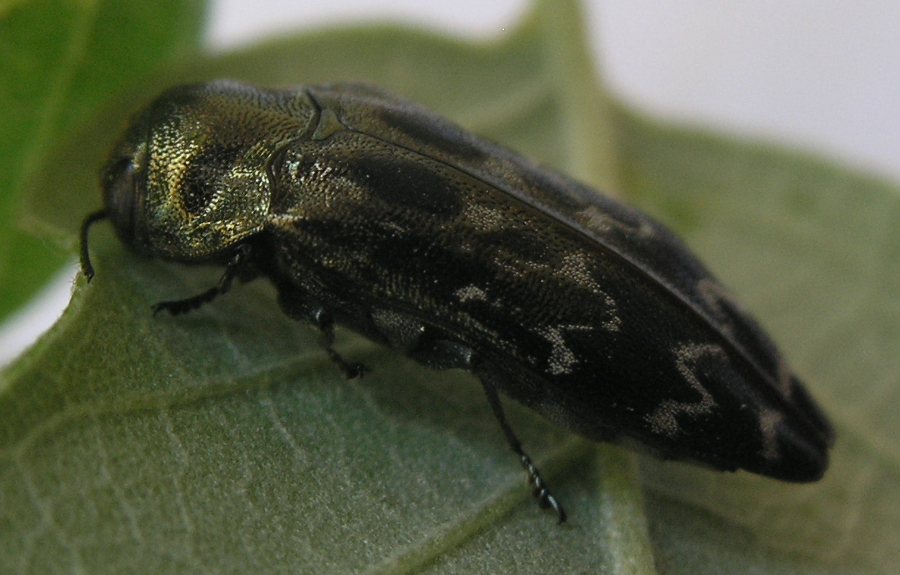
Cork oak forest
 General information
General information
The cork oak forest is one of the most common arboreus plant communities in Extremadura, both on mountains or in dehesas. In both cases the species is often present in combination with holm oaks. It spans over an area of 363,974 hectares of natural forest, with further 62,382 hectares of reforestation cork oaks. It dates back to the tropicaloid forests of the Neogene that must have covered a large part of Extremadura more than 13 million years ago. The biodiversity in these communities is very rich, one of the richest in the warm areas of Planet Earth.
Currently, these forests contribute many positive effects and services to the world, with the yield of cork being one of the most significant. Generally, the cork oak forests of Extremadura yield excellent-quality cork, which has been rated by many as the best cork in the world, due to its special characteristics which make it ideal for the manufacture of natural cork stoppers, the flagship product of the cork industry.
 Cork quality
Cork quality
Cork quality assessment processes begun in 1984. Since then and with the purpose of making significant progress in this field, the following worthy contributions have been made:
Invention of Q Index. It allows to apply statistics to sampling in a way that the number of cork samples required to discern the quality of a cork batch and to detect any errors in its sampling can be determined.
Cork quality map. Using the database from “Plan de Calas” (cork quality field sampling) plan, the quality index and the cork selection classes, maps by province have been drawn up at a 1:200.000 scale showing the quality of the cork yielded by the cork oak forests of Extremadura. Such map is useful not only for the management of raw material sourced for the cork industry, but also for the study of the factors that determine the technological quality of cork.
Design of a new method of sampling cork in a pile. It helps to perform an efficient and systematic sampling process to ascertain the quality of piled cork. This method was awarded the “Vieira Natividade” Mention of Honour at the 1st World Cork Congress in Lisbon.
Patented new procedure for the assessment of the quality of cork plank batches. This procedure uses a piece of software to classify a batch of cork in a more automated and simple way rather than the traditional selection process. This patent is shared between UPM (55%), INIA (15%), AMAYA (15%) and CICYTEX (15%).
Additionally, cork quality studies use the data provided by “Plan de Calas”, which is a service offered by ICMC (establishment affiliated to CICYTEX) in order to assess cork quality in the field.
 Cork debarking technology
Cork debarking technology
The study of new debarking technologies is of primary interests at CICYTEX in the attempt to provide a solution to all the drawbacks of traditional debarking methods, such as unskilled and aged labour, tree damage, labour health and safety issues, etc. In order to overcome these drawbacks, the most innovative technologies available each time are tested and new supplementary tools are designed to measure a high number of parameters from a high number of cork trees in order to analyse each technological development in depth.
This line of work intends to mechanise the process of cork extraction from start to end in order to make it more productive. The debarking process using new technologies starts with a preliminary superficial cut using a specific piece of equipment. This procedure is completed through the use of supplementary devices that are designed to abandon the use of the axe in three of the operations required to extract the cork planks: detach, separate and extract. Amongst these tools, the electrical cork pincer and the technological lever are worth a special mention, as they are both patented by CICYTEX.
 Cork oak reforestation
Cork oak reforestation
CICYTEX conducts projects in this line of work with the purpose of achieving the most successful cork oak reforestation. These projects analyse the preparation of the soil, the treatments applicable to the existing vegetation, the planting methods and season, etc. in order to identify the most adequate approach in each case.
Furthermore, taking into account the importance of the forestry work during the first years of a reforestation project, these projects assess the most recommendable practices and how to apply them, while they mainly focus on the elimination of competitive vegetation, fire prevention and pruning for tree training.
Likewise, our establishment conducts dendrochronological studies which analyse the way the cork oaks are developing throughout their life span in order to determine their age based on their size.
We have recently opened a line of study for growing cork oak trees using fertigation. The purpose behind is to obtain trees yielding high-quality cork with an early start of production, thus reducing the age at which each tree starts to yield reproduction cork. This new line of work is developed by CICYTEX-ICMC’s (experts in forest systems) and CICYTEX-La Orden’s (experts in irrigation and fertilisation) working teams.
 Cork oak forestry
Cork oak forestry
The fieldwork conducted by CICYTEX within this line covers the forestry procedures of nearly the entire worldwide distribution area of cork oak. Numerous variables are drawn in order to later on analyse the impact of the forestry work carried out in a cork oak forest, including its degree of development, cork suitability and plant health.
Also, for the purposes of determining the most adequate way to conduct forestry work, specific treatments are tested on experimental plots. Worth a mention are the pruning tests for tree training, the clearing and the restoration of cork oak forests that have been affected by fire, amongst others.
In relation to this point, the effects that fire has on cork oak forests, including the cork itself, the tree and the soil, have been under studied. On the basis of the results obtained, certain actions, treatments and restoration projects have been designed and followed up in mountain ranges that were subject to fires. Such results have been reflected on the manual entitled: El alcornocal y el fuego (The cork oak forest and fire).
For further information on cork oak forestry, you can visit the manual entitled: Selvicultura adaptativa para la gestión de los alcornocales en Extremadura (Adaptive forestry for the management of cork oak forests in Extremadura).
 Protection against cork oak pests and diseases
Protection against cork oak pests and diseases
In terms of the pests affecting the cork oak, the Coroebus undatus is worth mentioning. This beetle is known in Spanish as culebra (meaning snake) or culebrilla del corcho (meaning "tiny cork snake "), because of the shape of the galleries that its larvae bore between the bark and the phellogen, known as "mother layer", when feeding. Such galleries are visible during the debarking of the tree, affecting the quality of the cork and depreciating the product. At CICYTEX, annual control procedures are carried out in order to capture this insect and improve our knowledge of relevant aspects such as their biological cycle, the length of their life cycle as larvae, the activity of such insects during the flying stage, the population level and all parameters associated to this pest that may help in the search for a control method.
We also conduct important work for the detection, prevention and control of the root rot disease caused by pathogen Phytophthora cinnamomi.




